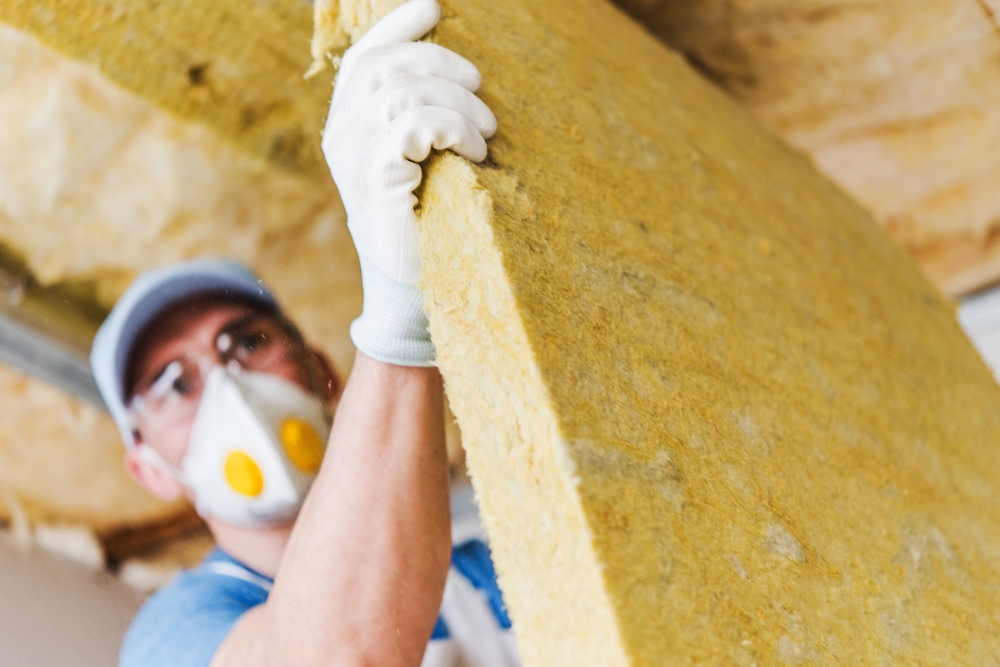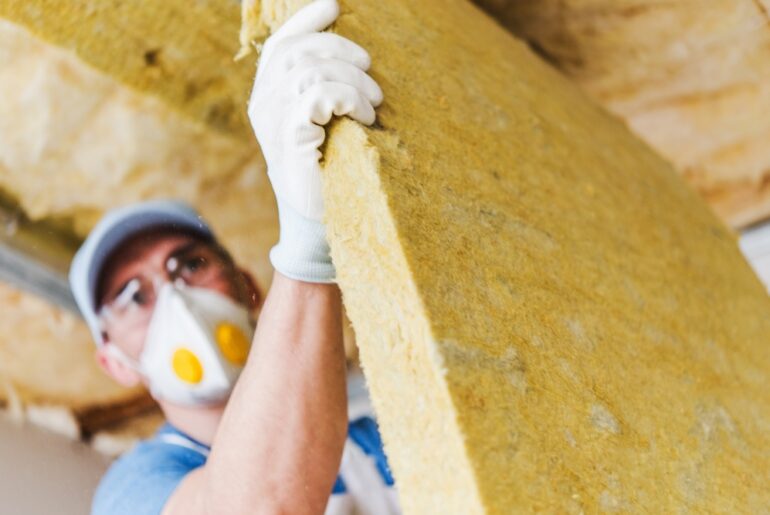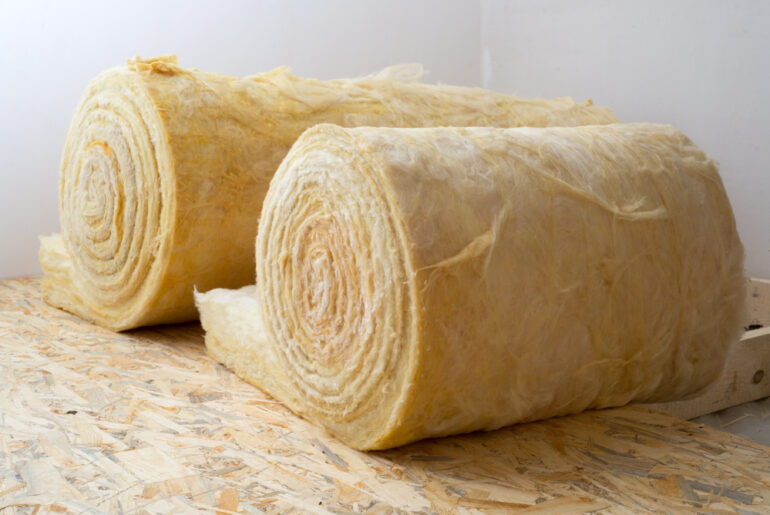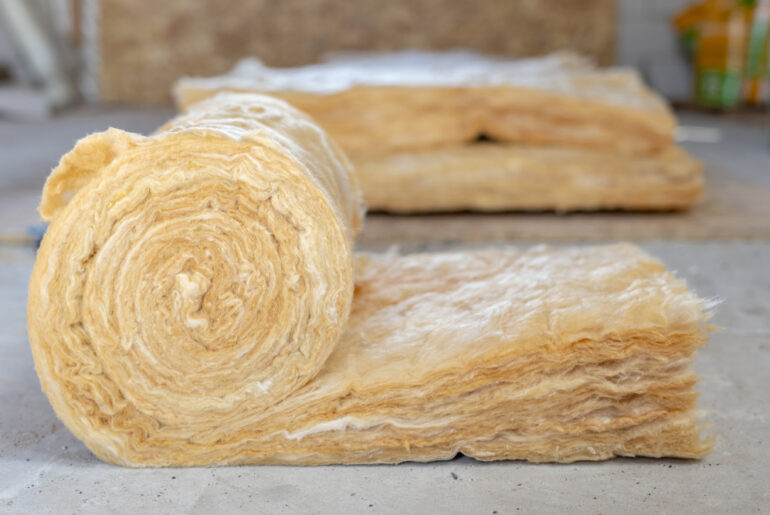Mineral wool insulation has a lot going for it, and is a popular choice for insulating walls and ceilings, but how easy is it to work with, and do you need any specialist tools?
The manufacturers of mineral wool will be happy to sell you a special tool for cutting their insulation batts, but oftentimes a simple, serrated bread knife will do the job of cutting the product. A flat blade, such as a craft knife, will dull quickly and need replacing regularly.
Here’s our guide on how best to set yourself up for cutting mineral wool insulation.
What Tools Can I Use?
There are several tools that are ideal for cutting mineral wool. Some are obvious, others might surprise you.
The Mineral Wool Knife
The manufacturers of Rockwool mineral wool recommend their own special serrated saw for cutting batts. Similar blades can be bought from your local big box home improvement store and they work perfectly well.
If you are likely to be cutting a large amount of mineral wool, then making such a purchase would be a good idea as these knives are robust enough for heavy daily use over a period of time.
The Regular Wood Saw
A regular handsaw does the job well enough to make it a contender. We would recommend using an older saw, one that gets tired quickly when cutting timber. Bigger teeth will mean a more ragged finish to the cut, so it’s better to go with a smaller-toothed saw.
You can buy a saw designed specifically to cut mineral wool insulation too, which is ideal when you have a large volume to deal with.
This cutting method can get dusty, so you will definitely need a mask, and these saws will get blunt, and as they can’t be sharpened, you may need more than one.
The Bread Knife
A standard, good old, regular kitchen-style bread knife, is a perfect DIY tool for cutting mineral wool. It is ideal if you do not have a huge amount of insulation to fit. Held at an angle of 45°, and without too much downward pressure on the handle, a bread knife will ease through mineral wool like a knife through butter.
Spend a dollar or two on the least expensive one you can find or upgrade your current kitchen utensil and wear out the old one on your home improvement plans.
Bread knives are an ideal utensil for cutting and shaping mineral wool around penetrations or grooving to take cables. Whether you have a larger hand saw or an electric cutting tool, an eight-inch bread knife will do all the small jobs.
While mineral wool is not toxic, it is always sensible to wear a mask when cutting with a tool like this, to protect your airway from irritating dust.
The Electric Carving Knife
Insulation installers who work with mineral wool day in, day out, oftentimes prefer to use an electric carving knife. They are lightweight and easy to use, cheap to buy, and quick too. They are great for cutting circular holes for service penetrations and carving around pipes and ductwork.
Domestic electric carving knives are also recommended for cutting multi-layer foil insulation as the twin blades do not clog up.
The Reciprocating Saw
A reciprocating saw is an industrial scale step-up from an electric carving knife, and for this task, you will need a 12” blade such as this one. A cordless reciprocating saw will get the job done wherever you are on-site and is ideal when you need to get the job completed in as little time as possible.
It’s what the professionals have in their tool kit as it will cut 6” deep mineral wool with ease. The pros also recommend that you use a good quality, well fitted dust mask with a reciprocating saw too.
What Tools Not To Use
The Craft Knife
An extending craft knife that has snap-off grooves might be good for fiberglass, but mineral wool has three times the density. Not only will your craft knife get blunt more quickly, but the pressure exerted will likely snap the blade too.
The Circular Saw
You might have used a rotary, or circular saw to cut up polyiso board before, but it’s not a good pick for mineral wool as the blade and guard will clog quickly, and may even overheat.
As for dust, well this tool will take the prize for making the most airborne nuisance, so another good reason to avoid using one to cut mineral wool.
Our Top Tips for Using Cutting Tools With Mineral Wool
- Use a serrated knife to make grooves (chases) for electric cables, pipes, or conduits. If you are making all the major cuts with a saw, a serrated knife is still always best for detailed jobs.
- Don’t use a flat blade, box-cutter, or craft knife as it won’t cut deep enough, will get blunt quickly, and you could end up crushing the insulation and reducing its effectiveness.
- Remember to always keep your hands and fingers, and other body parts, behind the blade when cutting.
- Cut on a sheet of plywood, or a tabletop to protect the floor and the cutting edge of the blade. A concrete floor will dull a blade very quickly.
- Wear personal protective equipment. Cutting fibrous material like mineral wool will create dust, and while it is not toxic, it can lead to irritation of the airway.
- If there are other tradespeople working in the same space, make sure that they also have access to the same level of protection.
- Always cut in a well-lit area, either by a window, doorway or with good task lighting that does not cast a shadow on the working area.
- Mineral wool does not mark with pencils or with a pen. Use the tip of a sharp blade instead, perhaps that craft knife, to make accurate lines on the face of the insulation.
- Pro tip: You could use a white grease pencil, fabric pencil, or white crayon to mark your mineral wool if you have a complex cut to make.
Check out this article for a more detailed process on how to install mineral wool insulation.





